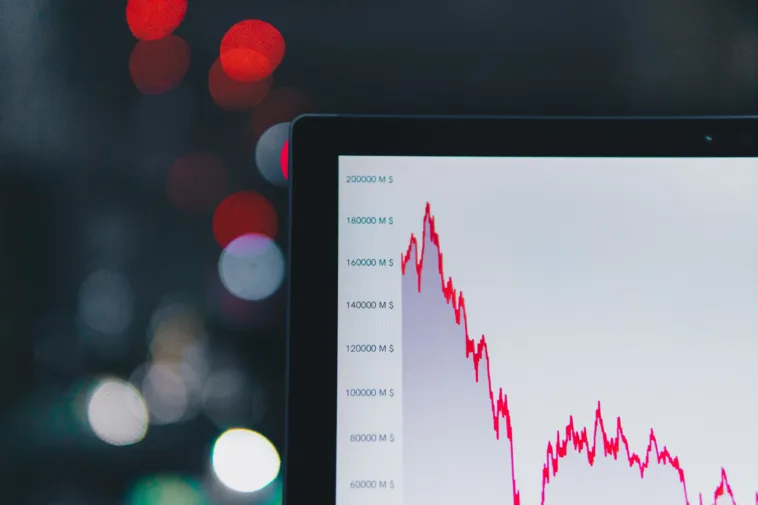Financial panics have long been a source of concern for individuals, businesses, and governments alike. These events can have far-reaching consequences, including bank failures, stock market crashes, and economic depressions.
One of the most common causes of financial panic is a bank run, which occurs when a large number of depositors simultaneously withdraw their funds from a bank out of fear that the bank will become insolvent.
In this blog post, we will explore what a bank run is, the various factors that can trigger one, and other causes of panic in the financial markets. By understanding the causes of financial panics, we can better prepare for and prevent them from occurring in the future.
Bank Runs
A bank run is a situation in which a large number of depositors withdraw their funds from a bank, often over a short period of time. This can happen for a variety of reasons but typically occurs when depositors lose confidence in the bank’s ability to meet its obligations, such as returning deposits on demand.
A bank run can be triggered by rumours about the bank’s solvency, actual losses suffered by the bank, or a lack of liquidity that prevents the bank from meeting depositors’ demands for cash.
During a bank run, depositors may rush to the bank to withdraw their funds, which can quickly deplete the bank’s reserves and lead to its insolvency. This can, in turn, trigger further bank runs as other depositors try to withdraw their funds before the bank fails. Historical examples of bank runs include the Panic of 1907 in the United States, where a series of bank failures and stock market crashes led to widespread panic and economic disruption, and the Great Depression, where a wave of bank failures contributed to a severe and prolonged economic downturn.
Bank runs can be devastating for both individual depositors and the wider economy. The loss of confidence in the banking system can lead to a loss of trust in other financial institutions and contribute to a broader financial panic.
Causes of Bank Runs
Bank runs can be triggered by a variety of factors. For example, depositors may hear rumours about the bank’s solvency, causing them to fear that their deposits may be lost. In some cases, the bank may have suffered actual losses that raise concerns about its ability to repay depositors. Additionally, if a bank lacks sufficient liquidity to meet depositors’ demands for cash, this can create a panic that leads to a run.
Bank runs can be exacerbated by a variety of factors as well. For example, if other banks are also experiencing financial difficulties, this can create a general sense of fear and mistrust in the banking system as a whole. Similarly, if depositors perceive that others are withdrawing their funds from the bank, they may feel pressure to do the same in order to protect their own deposits.
Depositor behaviour can also play a role in bank runs. If a large number of depositors try to withdraw their funds at the same time, this can create a self-fulfilling prophecy where the bank becomes unable to meet depositors’ demands and ultimately fails.
To prevent bank runs, regulators and policymakers can take steps to ensure that banks are adequately capitalized and have sufficient liquidity to meet depositors’ demands. Additionally, measures such as deposit insurance can help to reassure depositors and reduce the likelihood of a panic.
Other Causes of Financial Panics
While bank runs are a common cause of financial panics, there are other events or factors that can trigger widespread panic in the financial markets.
For example, a stock market crash can lead to a general sense of fear and uncertainty that can spill over into other parts of the economy. Similarly, a sovereign debt crisis or a currency crisis can create a sense of instability that can lead to broader economic consequences.
During a financial panic, investors may rush to sell their assets, causing prices to plummet and leading to further panic. This can create a vicious cycle where economic instability leads to asset price declines, which in turn leads to further instability.
To prevent financial panics, policymakers can take a variety of steps. For example, they can implement policies to promote financial stability, such as increasing transparency in financial markets or limiting the amount of leverage that financial institutions can take on. Additionally, they can provide support to the financial system during times of stress, such as through emergency lending facilities or other measures designed to stabilize the markets.
Ultimately, the best way to prevent financial panics is to promote long-term economic stability through sound economic policies and effective regulation. By doing so, we can help to ensure that the financial system remains resilient even in times of stress.
Conclusion
Financial panics can have serious consequences for individuals, businesses, and governments. Bank runs, in particular, can lead to widespread economic disruption and contribute to broader financial panics. While there are a variety of factors that can trigger financial panics, policymakers can take steps to promote financial stability and prevent these events from occurring.
By ensuring that banks are adequately capitalized and have sufficient liquidity, regulators can help to prevent bank runs and reduce the likelihood of broader financial panics. Additionally, policies that promote transparency, limit leverage, and provide support during times of stress can help to promote long-term financial stability.
While financial panics are difficult to predict and can be challenging to manage, a proactive approach to regulation and policymaking can help to mitigate their impact and prevent them from spiralling out of control. By taking steps to promote financial stability and reduce the likelihood of panic, we can help to ensure that our financial system remains strong and resilient, even in the face of unexpected challenges.







